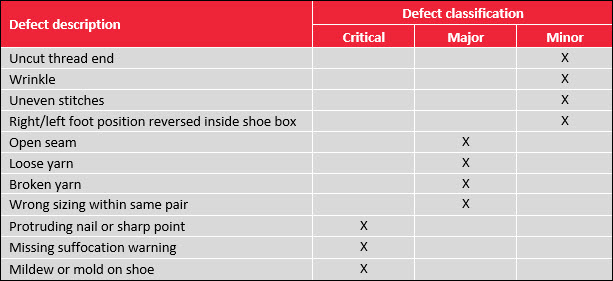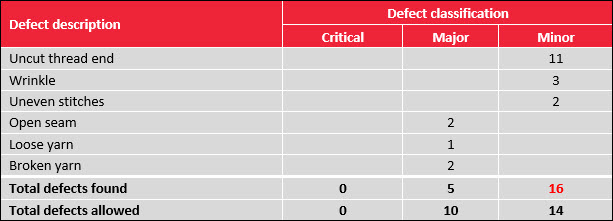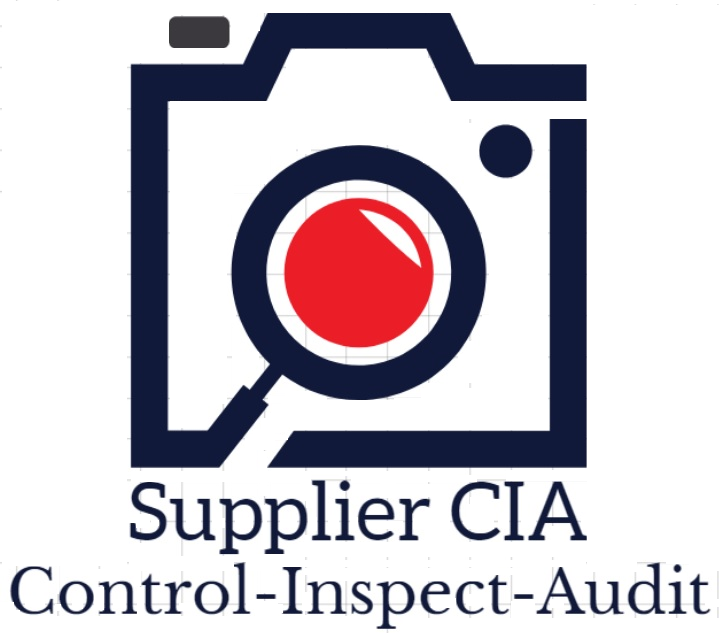3 Types Of Defects Every Importer Needs To Know
Quality control professionals typically classify quality defects into three main categories; minor, major and critical according to nature and severity of the defect.
Minor defects: Usually small, insignificant issues that don’t affect the function or form of the item. In most cases, the customer wouldn’t even notice a minor defect on a product.
If minor defects exceed the tolerance limit, the item fails in quality control. (Customer wouldn’t likely return.)
Major defects: Major defects are those which could adversely affect the function, performance or appearance of a product. More serious than minor defects. (Customer would likely return.)
Critical defects: Critical defects render an item completely unusable and/or could cause harm to the user or someone in the vicinity of the product. Will often fail product inspection if a single critical defect is found within the order. (Put businesses at serious risk of product liability issues, lawsuits and product recall. Can cause harm to end-users.)
1- Softlines: Softline products include raw fabric, home textiles, garments and other woven or knitted products and footwear. Softline mostly includes labor-intensive production processes and more open to minor defects. |
||
MinorUntrimmed thread can easily rework by cutting excess threads. Customers can classify as a major defects. |
MajorMissing stitches a fault with the sewing machine or an operator error. |
CriticalNeedle found in item needles can pose a hazard to the end-user if they end up in the finished goods. |
2- Hardlines: Hardline products include a broad range of goods typically made of metal, wood or plastic materials. This category includes most furniture, sporting equipment, cookware, building materials and tools. |
||
MinorLight abrasion on the surface and other damage to the surface of an item typically won’t hurt the product’s salability. |
MajorDeep scratch on item logo hey can impact product salability and consumer perception of a brand. |
CriticalSharp point or burr on an item can cause harm to the end-user often lead to product recalls. |
3- Electrical and electronic products: Consumer electronics, many household appliances, certain toys, power tools and other products that require electricity to function. |
||
MinorRemovable mark on item – marks on the surface, can include dirt or excess glue. |
MajorNon-function or malfunction a failure to turn on, display issues or connectivity issue. |
CriticalDamaged wiring –Such a critical defect presents risk of fire, electric shock, or in severe cases, |
4- Industrial components: Fabricated steel, conduit piping, gas valves, wind turbines, maritime equipment and other machinery or materials designed for industrial use. |
||
MinorSurface imperfections a welding protrusion on a steel pipe. |
MajorNon-critical dimensions out of tolerance won’t impact the overall function of the product |
CriticalRust – corrosion before shipping can be a sign of accelerated degradation and product failure. |
Example: Checklist and defect classification for a lipstick


Example: Defect classification table for a footwear product:

This defect classification list might extend to include 20 or even 30 different types of defects depending on your product type. The more information you can provide, the better prepared your QC team and supplier will be.
The order will fail inspection if the number of defects found exceeds the allowed number. As you can see in the below excerpt, this order would fail inspection due to the number of minor defects exceeding the allowed number:

This order would fail inspection based on AQL standards, it’s up to you as the importer to decide whether to ship the order.
-
Ask your supplier to correct quality issues through product rework or production of replacement goods
-
Re-inspect to ensure product defects have been removed or corrected
-
Chargeback your supplier for any re-inspections and quality issues, if you’ve previously set this condition as part of your agreement with them
-
Destroy any unsellable goods to prevent defective goods from reaching customers through the grey market

